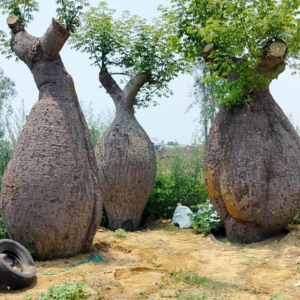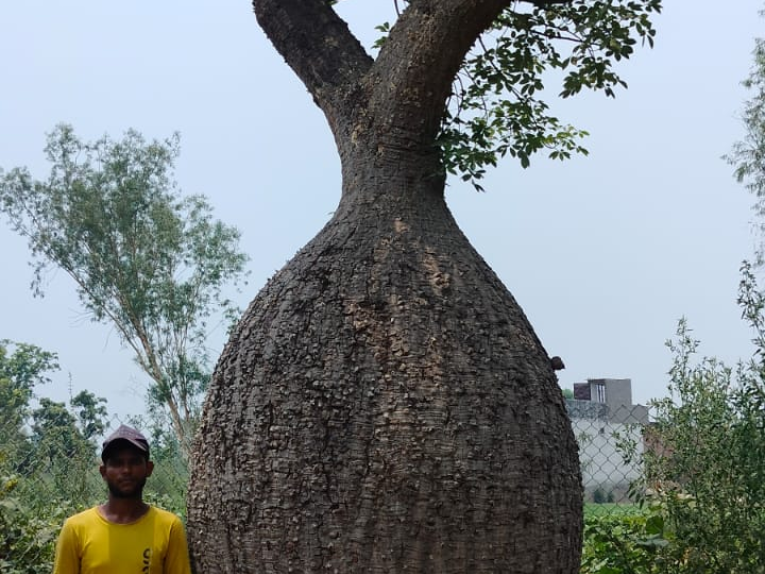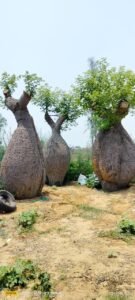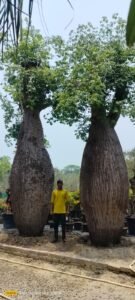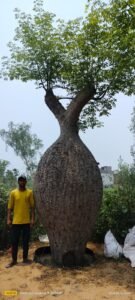About Ceiba insignis
Common Names: White Floss Silk Tree, Drunken Tree, Drunken Stick, Palo Borracho
Family: Malvaceae (formerly Bombacaceae)
Native Region: South America – mainly Argentina, Bolivia, and Peru
Related Species: Closely related to Ceiba speciosa (Pink Silk Floss Tree), but Ceiba insignis generally has paler flowers (white or cream).
Key Features
Size: Medium-sized deciduous tree, usually 9–18 meters (30–60 feet) tall.
Trunk: Swollen or bottle-shaped base, often covered with large conical spines.
Leaves: Palmately compound, bright green, shed during the dry or cool season.
Flowers:
Large, showy, white to pale yellow, sometimes with a pinkish blush.
Appear in autumn or early winter after the leaves drop, making them very noticeable.
Pollinated by insects and occasionally bats.
Fruit/Seeds: Large woody pods that split open to release seeds surrounded by silky floss, historically used for stuffing pillows and mattresses.
Growth and Cultivation
Soil: Prefers well-drained sandy to loamy soil.
Sunlight: Requires full sun.
Water: Drought-tolerant once established; does not thrive in waterlogged soil.
Climate: Best suited for tropical and subtropical regions; can tolerate temperatures down to about -6°C (20–25°F).
Growth Rate: Fast-growing in warm climates.
Ecological and Cultural Importance
Ecology: Provides nectar for pollinators such as bees and butterflies.
Ornamental Use: Popular in parks, gardens, and along avenues for its dramatic flowers and distinctive trunk.
Traditional Uses:
Seed floss used for bedding and padding.
Soft wood occasionally used for light carpentry.
Bark and seeds have been applied in traditional medicine in native areas.

